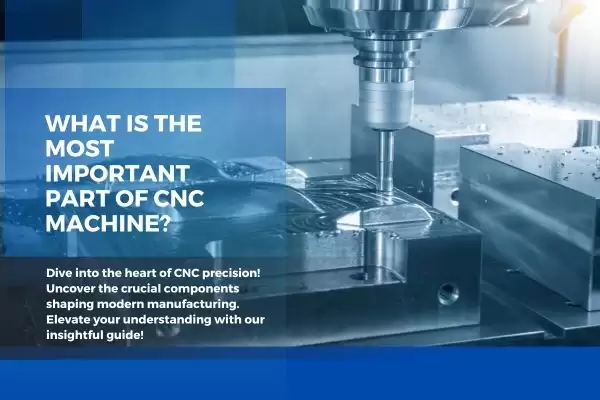
Aug 13,2024
In the intricate world of modern manufacturing, CNC machines stand as the backbone of precision and efficiency. These engineering marvels have revolutionized industries by automating processes and producing intricate components with unparalleled accuracy. But have you ever wondered what truly makes a CNC machine tick? In this exploration, we'll dissect the anatomy of a CNC machine and unravel the mystery behind its most crucial components.
At the heart of manufacturing, CNC (Computer Numerical Control) machines have become synonymous with precision and automation. These machines are a staple in the aerospace and automotive industries, transforming raw materials into finely crafted components with minimal human intervention. To truly appreciate their capabilities, it's essential to delve into the core components that make CNC machines the workhorses of modern production.
Imagine a skyscraper without a solid foundation – it's bound to crumble. Similarly, the frame and structure of a CNC machine provide the stability and rigidity necessary for its operation. A robust frame minimizes vibrations, contributing to enhanced precision in cutting and shaping materials. The frame's choice of materials and design significantly impact the machine's lifespan and overall performance.
The spindle is the powerhouse of a CNC machine. The component rotates the cutting tool, allowing the machine to remove material precisely. Different spindles cater to various machining needs, from high-speed milling to heavy-duty cutting. Understanding the intricacies of spindle selection is vital for achieving optimal results in diverse manufacturing applications.
The control panel is the brain of the CNC machine, where operators interact with the system. An intuitive and user-friendly interface is paramount for efficient operation. Advanced control systems simplify the machining process and open the door to innovative features such as real-time monitoring and adaptive control. A well-designed control panel is the gateway to unlocking the full potential of a CNC machine.
Precision in motion is achieved through a synergy of motors and drives. Stepper motors, servo motors, and their corresponding drives work harmoniously to control the movement of the machine's various axes. The choice between these motor types depends on factors like speed, torque, and the complexity of the machining task. Understanding the role of motors and drives is crucial for achieving the desired level of accuracy in CNC machining.
Smooth and accurate motion is made possible by components like ball screws and linear guides. These elements are pivotal in reducing backlash – the unwanted play in the machine's movements. Choosing the right combination of ball screws and linear guides contributes to the overall precision of the CNC machine, ensuring that each movement is executed with the utmost accuracy.
In a world where time is money, the efficiency of a CNC machine is often measured by its tool-changing capabilities. A tool changer allows the machine to switch between different tools swiftly, minimizing downtime and maximizing productivity. The ability to automate tool changes enhances efficiency and expands the machine's versatility, enabling it to tackle a wide range of tasks seamlessly.
CAM (Computer-Aided Manufacturing) software facilitates the transition from design to production. CAM software translates digital designs into machine instructions, generating toolpaths that guide the CNC machine's movements. CAM software's efficiency directly impacts the machining process's speed and accuracy. Investing in advanced CAM software can unlock new possibilities in complex geometries and optimized toolpaths.
Behind every precise movement of a CNC machine is a carefully crafted program. CNC programming involves creating a set of instructions that guide the machine through each step of the machining process. Error-free programming is essential for flawless execution, and it requires a deep understanding of the machine's capabilities and the intricacies of the desired output. The art of CNC programming is a crucial aspect of maximizing a machine's potential.
Regular inspections are paramount to ensure a CNC machine's longevity and consistent performance. Routine checks help identify potential issues before they escalate, preventing costly breakdowns and downtime. Components like belts, bearings, and wiring should be inspected regularly to catch signs of wear and tear early on.
Smooth operation is contingent on proper lubrication. CNC machines have various moving parts that require lubrication to minimize friction and reduce wear. Following recommended lubrication schedules for different components, such as the spindle and ball screws, is essential for maintaining the machine's precision and extending its overall lifespan.
In conclusion, the most important part of a CNC machine isn't a single component but rather the harmonious collaboration of its intricate parts. From the solid frame providing stability to the precision-driven spindle and the sophisticated control panel, each element plays a crucial role in the machine's ability to deliver unparalleled accuracy in manufacturing. Understanding these components empowers operators to harness the full potential of CNC machines, pushing the boundaries of what is possible in the world of precision machining.